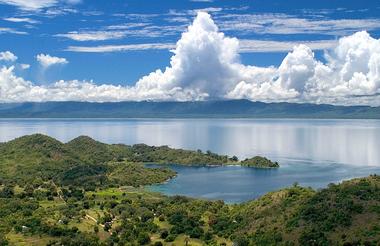Although in Mozambican waters, Likoma Island is Malawian territory and is the larger of the two inhabited islands of Lake Malawi, measuring seventeen square kilometres across. The island boasts some lovely beaches, friendly locals, and predominantly flat terrain with a baobab dotted southern side. It is home to the headquarters of the University Mission to Central Africa, Livingstone’s mission, and hence it remained British territory when the Lake was divided politically after World War Two. The island is famous for the large, beautiful St. Peter's Cathedral, featuring numerous stained glass windows and intricate soapstone details. Visitors can relax on pristine beaches, snorkel and dive in the crystal-clear waters, and enjoy a variety of watersports.



Lake Malawi is the crowning jewel of this beautiful country. It is one of the largest, longest and deepest freshwater lakes in the world. Numerous fishing villages are scattered along its length but there are still vast stretches of uninhabited golden beaches. Known as ‘The Lake of Stars’, the natural beauty of Lake Malawi draws travellers from around the globe. It has more species of fish than any other freshwater lake in the world, boasting over 600 species of fish in the Lake Malawi National Park alone. The 590 kilometre long and 85 kilometre wide Lake is the third-largest lake in Africa, occupying one-fifth of Malawi’s total area. With a depth of 700 metres, it is incredibly deep with its lowest point reaching more than 200 metres below sea level. Visitors can look forward to spotting a myriad of wildlife in and around the lake including, hippos, crocodiles, fish eagles, and over 1000 species of brightly-coloured endemic cichlid fish.



Located just off the northern coast of Mozambique, the Quirimbas Archipelago dots the glittering Indian Ocean. It is renowned for its rich history and natural beauty featuring white-sand beaches fringed with low-key resorts and offers some of the best diving in the country. The archipelago is home to some of the most unspoilt beaches and coral reefs found anywhere in the world, featuring an abundant array of Mozambique's spectacular marine life. The Quirimbas Archipelago is comprised of a chain of over 25 coral islands, which escaped the 20th century with almost no development. Many of these islands fall within the Quirimbas National Park, providing a marine sanctuary for whales, dolphins, and endangered dugong. The area is known for its high-quality dive sites, many with exceptional drop-offs.



As previously described






